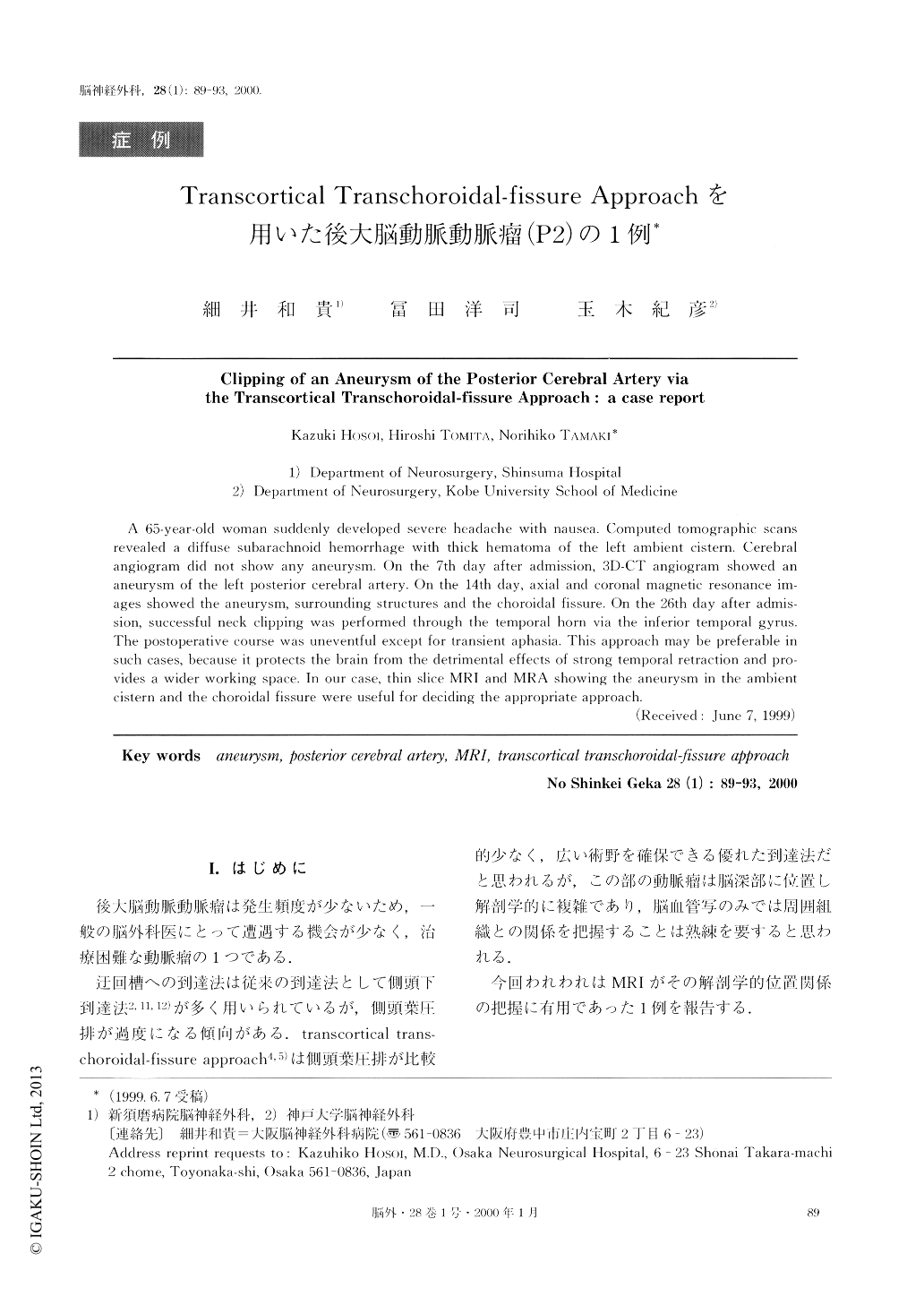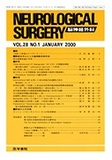Japanese
English
- 有料閲覧
- Abstract 文献概要
- 1ページ目 Look Inside
I.はじめに
後大脳動脈動脈瘤は発生頻度が少ないため,一般の脳外科医にとって遭遇する機会が少なく,治療困難な動脈瘤の1つである.
迂回槽への到達法は従来の到達法として側頭下到達法2,11,12)が多く用いられているが,側頭葉圧排が過度になる傾向がある.transcortical trans-choroidal-fissure approach4,5)は側頭葉圧排が比較的少なく,広い術野を確保できる優れた到達法だと思われるが,この部の動脈瘤は脳深部に位置し解剖学的に複雑であり,脳血管写のみでは周囲組織との関係を把握することは熟練を要すると思われる.
A 65-year-old woman suddenly developed severe headache with nausea. Computed tomographic scansrevealed a diffuse subarachnoid hemorrhage with thick hematoma of the left ambient cistern. Cerebralangiogram did not show any aneurysm. On the 7th day after admission, 3D-CT angiogram showed ananeurysm of the left posterior cerebral artery. On the 14th day, axial and coronal magnetic resonance im-ages showed the aneurysm, surrounding structures and the choroidal fissure. On the 26th day after admis-sion, successful neck clipping was performed through the temporal horn via the inferior temporal gyrus.The postoperative course was uneventful except for transient aphasia. This approach may be preferable insuch cases, because it protects the brain from the detrimental effects of strong temporal retraction and pro-vides a wider working space. In our case, thin slice MRI and MRA showing the aneurysm in the ambientcistern and the choroidal fissure were useful for deciding the appropriate approach.

Copyright © 2000, Igaku-Shoin Ltd. All rights reserved.


